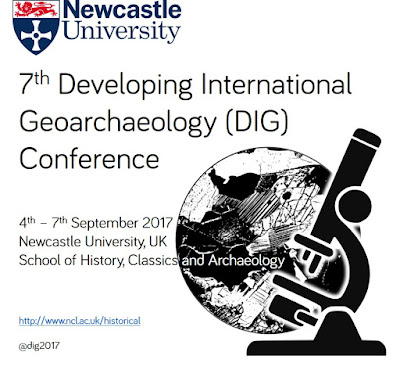Conferences and famous trees
 One of the main reasons I started my blog was in an effort to promote the first conference I organised, back in 2012. After the stress and time it took I told myself I was going to take a break from organizing big events. But now I've had a few years off I'm going to do something even bigger and better (hopefully!) for the 7th Developing International Geoarchaeology conference, which I'm pleased to say we will be hosting at Newcastle University in September 2017. The call for papers is likely to be issued towards the end of this year, so follow us on Twitter and/or Facebook for updates.
One of the main reasons I started my blog was in an effort to promote the first conference I organised, back in 2012. After the stress and time it took I told myself I was going to take a break from organizing big events. But now I've had a few years off I'm going to do something even bigger and better (hopefully!) for the 7th Developing International Geoarchaeology conference, which I'm pleased to say we will be hosting at Newcastle University in September 2017. The call for papers is likely to be issued towards the end of this year, so follow us on Twitter and/or Facebook for updates.DIG is one of the first conferences I went to as a PhD student, and I am pleased to be focusing more on specialized events at the moment, after a few years doing the SAA and EAA. Those huge conferences are great for catching up across a wide range of research areas, but I find them very exhausting and not so good for networking. I'm much better at interacting with people in a more focused setting. With that said, we are hoping to expand DIG and attract a wide range of delegates within geoarchaeology, both from the geoscience and archaeology side of things. We are lucky enough to have a great conference team at Newcastle who will help ensure everything goes smoothly, and of course the fantastic archaeology and geology of North East England provides some great opportunities for the conference field trip. Our current plan is a Hadrian's Wall trip to one of the Roman sites near Sycamore Gap, and of course a walk to the famous tree itself. I love this tree - I found out recently that it's actually the second tree in that location, and even the first one was only there from around the 1920s. So in terms of the landscape it is a very new feature, yet is probably one of the most famous landmarks. In case you didn't know, it's the tree that was in Robin Hood Prince of Thieves. I have a lot of childhood nostalgia for that film, and therefore the iconic tree. It's funny how something like a film can create a sense of connection to a landscape.
 |
| Sycamore Gap aka the Robin Hood tree |

Comments
Post a Comment